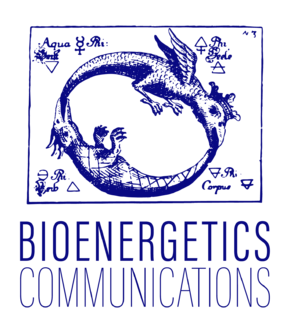Difference between revisions of "Komlodi 2021 BEC Q"
Tindle Lisa (talk | contribs) (Created page with "{{BEC}} right|290px|Bioenergetics Communications|link=https://www.bioenergetics-communications.org/index.php/bec/index {{NextGen-O2k H2020-support}}...") |
|||
| Line 18: | Line 18: | ||
Redox states of the mitochondrial coenzyme Q pool, which reacts with the electron transfer system, reflect the balance between (''1'') reducing capacities of electron flow from fuel substrates converging at the Q-junction, (''2'') oxidative capacities downstream of Q to O<sub>2</sub>, and (''3'') the load on the OXPHOS system utilizing or dissipating the protonmotive force. | Redox states of the mitochondrial coenzyme Q pool, which reacts with the electron transfer system, reflect the balance between (''1'') reducing capacities of electron flow from fuel substrates converging at the Q-junction, (''2'') oxidative capacities downstream of Q to O<sub>2</sub>, and (''3'') the load on the OXPHOS system utilizing or dissipating the protonmotive force. | ||
A three-electrode sensor (Rich 1988; Moore et al 1988) was implemented into the NextGen-O2k to monitor continuously the redox state of | A three-electrode sensor (Rich 1988; Moore et al 1988) was implemented into the NextGen-O2k to monitor continuously the redox state of CoQ<sub>2</sub> added as a Q-mimetic simultaneously with O<sub>2</sub> consumption. The Q-Module was optimized for high signal-to-noise ratio, minimum drift, and minimum oxygen diffusion. CoQ<sub>2</sub> equilibrates in the same manner as Q at Complexes CI, CII and CIII. The CoQ<sub>2</sub> redox state is monitored amperometrically with the working electrode, which is poised at CoQ<sub>2</sub> redox peak potentials determined by cyclic voltammetry. The voltammogram also provides quality control of the Q-sensor and reveals chemical interferences. | ||
The | The CoQ<sub>2</sub> redox state and O<sub>2</sub> consumption were measured simultaneously in isolated mouse cardiac and brain mitochondria. CoQ<sub>2</sub> ― and by implication mitochondrial Q ― was more oxidized when O<sub>2</sub> flux was stimulated by coupling control: when energy demand increased from LEAK to OXPHOS and electron transfer capacities in the succinate pathway. In contrast, CoQ<sub>2</sub> was more reduced when O<sub>2</sub> flux was stimulated by pathway-control of electron input capacities, increasing from the NADH (N)- to succinate (S)-linked pathway which converge at the Q-junction, with CI-Q-CIII and CII-Q-CIII segments, respectively. N- and S- respiratory pathway capacities were not completely additive, compatible with partitioning of Q intermediary between the solid-state and liquid-state models of supercomplex organization. The direct proportionality of CoQ<sub>2</sub> reduction and electron input capacities through the CI-Q-CIII and CII-Q-CIII segments suggests that CoQ<sub>2</sub> is accurately mimicking mitochondrial Q-redox changes. | ||
|keywords=coenzyme Q; CoQ, Q-junction, Q-redox state, electron transfer system; ETS, ETS-reactive Q-pool; Q, mitochondrial coenzyme Q; mtCoQ, supercomplexed Q; free Q-pool according to the fluid-state model; Qfree, cyclic voltammetry; CV, high-resolution respirometry; HRR, isolated mitochondria; imt, mouse heart mitochondria, mouse brain mitochondria, oxygen consumption, SUIT protocols, coupling control, pathway control, NS-pathway, additivity|editor=Gnaiger E, Cardoso LHD | |keywords=coenzyme Q; CoQ, Q-junction, Q-redox state, electron transfer system; ETS, ETS-reactive Q-pool; Q, mitochondrial coenzyme Q; mtCoQ, supercomplexed Q; free Q-pool according to the fluid-state model; Qfree, cyclic voltammetry; CV, high-resolution respirometry; HRR, isolated mitochondria; imt, mouse heart mitochondria, mouse brain mitochondria, oxygen consumption, SUIT protocols, coupling control, pathway control, NS-pathway, additivity|editor=Gnaiger E, Cardoso LHD | ||
|mipnetlab=AT Innsbruck Oroboros | |mipnetlab=AT Innsbruck Oroboros | ||
Revision as of 17:53, 11 November 2021
| Komlódi T, Cardoso LHD, Doerrier C, Moore AL, Rich PR, Gnaiger E (2021) Coupling and pathway control of coenzyme Q redox state and respiration in isolated mitochondria. Bioenerg Commun 2021.3. doi:10.26124/bec:2021-0003 |
» ![]() Published online: 2021-Nov-11
Published online: 2021-Nov-11
Komlodi Timea, Cardoso Luiza HD, Doerrier Carolina, Moore Anthony L, Rich Peter R, Gnaiger Erich (2021-11-11) Bioenerg Commun
Abstract: Redox states of the mitochondrial coenzyme Q pool, which reacts with the electron transfer system, reflect the balance between (1) reducing capacities of electron flow from fuel substrates converging at the Q-junction, (2) oxidative capacities downstream of Q to O2, and (3) the load on the OXPHOS system utilizing or dissipating the protonmotive force.
A three-electrode sensor (Rich 1988; Moore et al 1988) was implemented into the NextGen-O2k to monitor continuously the redox state of CoQ2 added as a Q-mimetic simultaneously with O2 consumption. The Q-Module was optimized for high signal-to-noise ratio, minimum drift, and minimum oxygen diffusion. CoQ2 equilibrates in the same manner as Q at Complexes CI, CII and CIII. The CoQ2 redox state is monitored amperometrically with the working electrode, which is poised at CoQ2 redox peak potentials determined by cyclic voltammetry. The voltammogram also provides quality control of the Q-sensor and reveals chemical interferences.
The CoQ2 redox state and O2 consumption were measured simultaneously in isolated mouse cardiac and brain mitochondria. CoQ2 ― and by implication mitochondrial Q ― was more oxidized when O2 flux was stimulated by coupling control: when energy demand increased from LEAK to OXPHOS and electron transfer capacities in the succinate pathway. In contrast, CoQ2 was more reduced when O2 flux was stimulated by pathway-control of electron input capacities, increasing from the NADH (N)- to succinate (S)-linked pathway which converge at the Q-junction, with CI-Q-CIII and CII-Q-CIII segments, respectively. N- and S- respiratory pathway capacities were not completely additive, compatible with partitioning of Q intermediary between the solid-state and liquid-state models of supercomplex organization. The direct proportionality of CoQ2 reduction and electron input capacities through the CI-Q-CIII and CII-Q-CIII segments suggests that CoQ2 is accurately mimicking mitochondrial Q-redox changes. • Keywords: coenzyme Q; CoQ, Q-junction, Q-redox state, electron transfer system; ETS, ETS-reactive Q-pool; Q, mitochondrial coenzyme Q; mtCoQ, supercomplexed Q; free Q-pool according to the fluid-state model; Qfree, cyclic voltammetry; CV, high-resolution respirometry; HRR, isolated mitochondria; imt, mouse heart mitochondria, mouse brain mitochondria, oxygen consumption, SUIT protocols, coupling control, pathway control, NS-pathway, additivity • Bioblast editor: Gnaiger E, Cardoso LHD • O2k-Network Lab: AT Innsbruck Oroboros
ORCID: ![]() Komlodi Timea,
Komlodi Timea,
![]() Cardoso Luiza HD,
Cardoso Luiza HD,
![]() Doerrier Carolina,
Doerrier Carolina,
![]() Rich Peter R,
Rich Peter R,
![]() Gnaiger Erich
Gnaiger Erich
Preprint
Labels: MiParea: Respiration, Instruments;methods
Organism: Mouse
Tissue;cell: Heart, Nervous system
Preparation: Isolated mitochondria
Regulation: Redox state, Q-junction effect Coupling state: LEAK, OXPHOS, ET Pathway: N, S, NS HRR: Oxygraph-2k, NextGen-O2k
SUIT-006 Q mt D071, SUIT-006 Q ce-pce D073, SUIT-031 Q mt D072, SUIT-031 Q ce-pce D074






